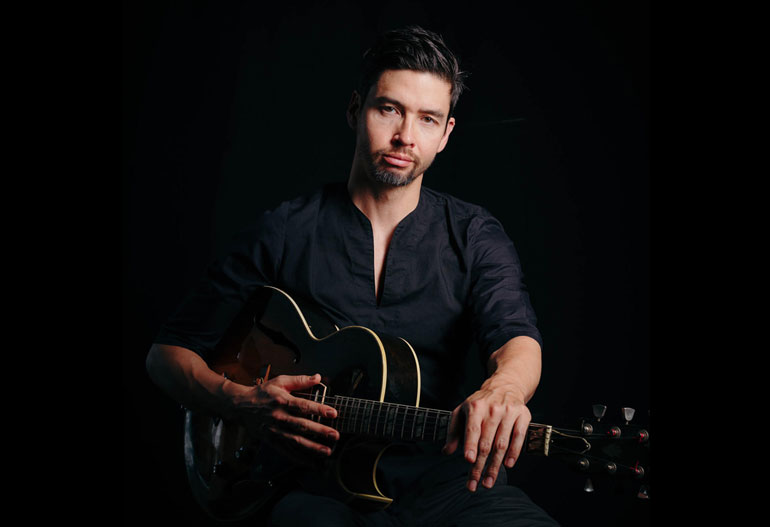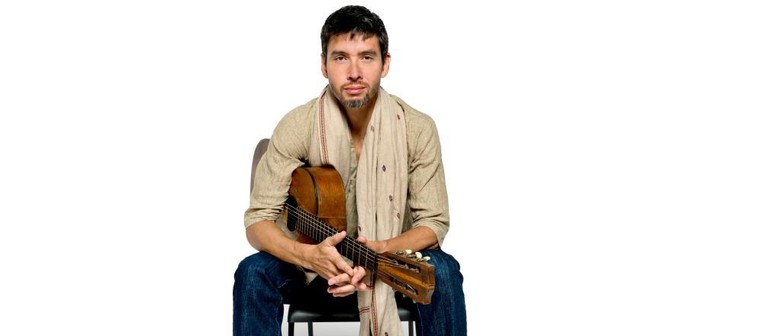
“He knew exactly how he wanted his music to sound.”Guitarist Miles Okazaki, is coming off the release of an extremely ambitious Thelonious Monk solo guitar album which includes all 70 of the composer’s works (the first of its kind).The six-album opus, aptly entitled Work (the title of one of Monk’s trickier tunes), has been sending a Guitarist Miles Okazaki, is coming off the release of an extremely ambitious Thelonious Monk solo guitar album which includes all 70 of the composer’s works (the first of its kind). “I think if Monk was alive, he’d be really, really annoyed with me,” the pianist Jed Distler said recently. Over the last couple of decades, several artists have tackled the complete songbook of Thelonious Monk, including pianist Alexander von Schlippenbach, who launched the unforgettable Monk’s Casino project at the Jazzfest Berlin in 2002, and fellow pianist Frank Kimbrough, who led a quintet through the oeuvre on last year. Miles Okazaki: Work (Music by Thelonious Monk) German premiere.
And he was admitting, unapologetically, that he’d done it his way: making outrageous choices and intentionally bucking the caution with which jazz musicians tend to approach Monk’s tunes.Yet jazz guitarist Miles Okazaki recently realised that Monk’s complete songbook (based on the list from Steve Cardenas and Don Sickler’s the Thelonious Monk Fake Book) had never been reimagined for solo guitar. Distler was discussing the latest and most ambitious recording of his career: a full-on reckoning, alone at the piano, with the monumental songbook of Thelonious Monk, roughly 70 pieces in all. Of the complete compositions of Thelonious Monk for solo guitar.Mr. Miles Okazaki is a NYC based guitarist originally from Port Townsend, a small seaside.


Coleman, whose music draws from across the African diaspora to make a thick-bodied, often unswinging funk.Mr. Okazaki chucks out fast and syncopated undercurrents on the lowest strings, you can feel the influence of Mr. Throughout the album, especially when Mr.
His style in this repertory is jocular to the point of insouciance — unsurprising, considering his past works include easy-listening interpretations of Beethoven and Brahms, and a string quartet called “Mister Softee Variations.”Even if you recognize the melodies, Mr. And critic, he began playing the full Monk book a few years ago in marathon concerts. Also a composer, radio D.J.
Still, I’m not so sure Mr. Elsewhere in the piece, he waits a little bit less than Monk would have between chords, erasing the potato-sack thwack of syncopation that typically defines the tune. Distler does almost the opposite — he lets that note drift, becoming the top of a gentle arc. “Bemsha Swing” has undergone a conversion from Caribbean pseudo-blues to slippery, Debussy-influenced glide.On “Light Blue,” despite the tune’s gentle nature, Monk tended to lean hard on the highest note of each phrase, using it to pivot hard back down. The up-tempo jounce of “Monk’s Dream” and “Criss Cross” has been turned into surface-skimming, 12-tone dashes, with debts to Cage and Stockhausen.
Distler are the only known solo completists. Frank Kimbrough, a straight-ahead pianist, recently made his own 70-song collection with his quartet, featuring rather by-the-book readings of Monk’s tunes that will come out in November on Sunnyside Records.But Mr. Distler’s devil-may-care playfulness. Okazaki’s purposeful devotion and Mr. His interpretations are so distant from the originals that I can almost see Monk laughing at the whole thing with bemused satisfaction.Early in the 2000s, the experimental German pianist Alexander von Schlippenbach became the first to record Monk’s entire oeuvre when his quartet made “Monk’s Casino,” an effort caught, to its detriment, between Mr.
Okazaki’s affectionate daring. Distler’s cheeky humor and Mr. Hence, solo Monk: both Mr. (His versions of “Darn That Dream” or “Sweet and Lovely,” from “Solo Monk,” illustrate the point.)A heap of Monk tribute discs arrived during the centennial last year, and one that got unfairly buried was Min Xiao-Fen’s “Mao, Monk and Me,” a moving solo album — just seven tunes, not 70 — with outside-the-lines renditions of two Monk classics, “Ask Me Now” and “Misterioso.” Playing the pipa, a Chinese lute, she brought her own history to the pieces while seeming to savor crucial elements of Monk’s genius: his thorough, ringing engagement with his instrument’s strings his percussiveness his capering between zips and blasts and meaningful silence.At Duke, I noticed that, while the jazz world is increasingly defined by pluralism — lapping up influences from across the cultural spectrum — Monk’s influence stands tall and firm, a kind of grounding force and perhaps the genre’s closest thing to a unit of artistic measure.But it’s no coincidence that, as the art form has begun to borrow more from other traditions, the stuff that was once inviolable within jazz is now available for new experimentation. In his solo piano playing, at a halting mid-tempo, he often sounds like someone learning a step, holding and testing a pose, cogitating.


 0 kommentar(er)
0 kommentar(er)
